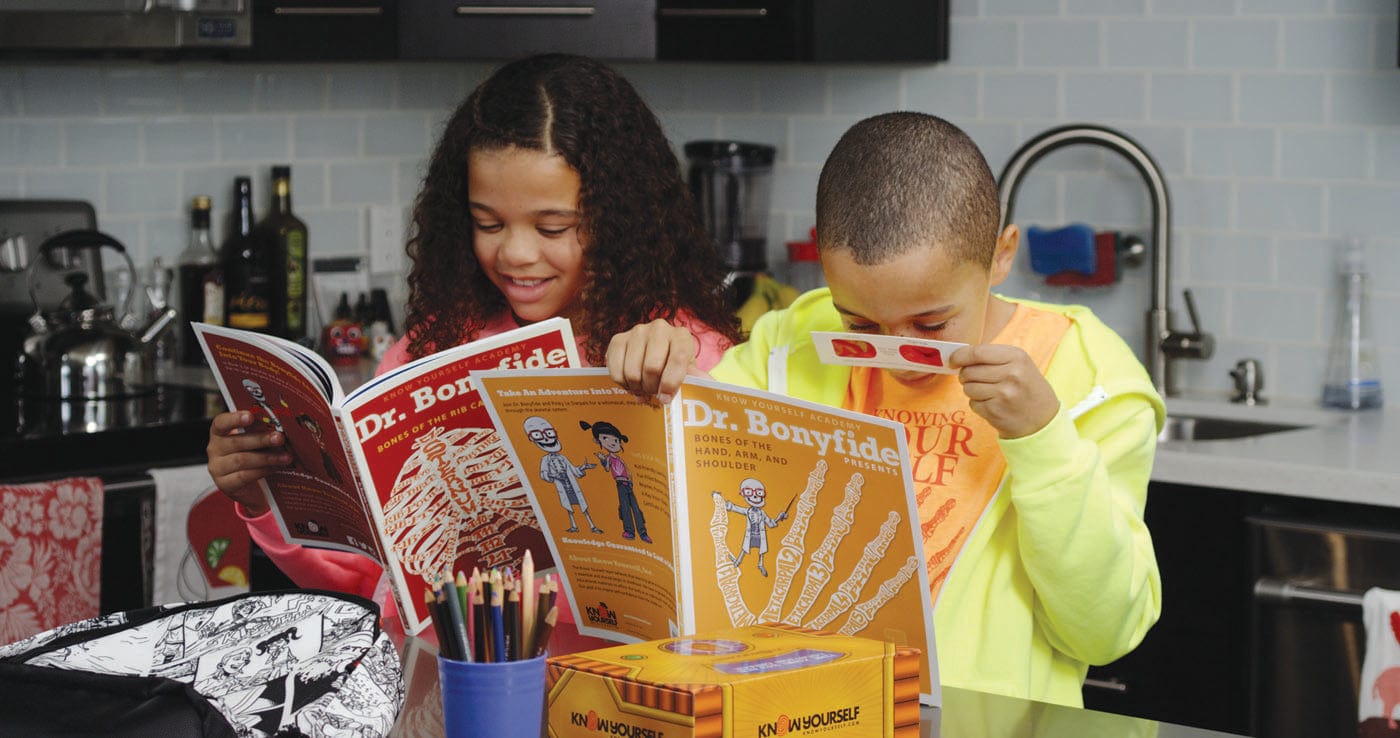
Parents, nutrition is such an important topic to explore with your children, and Know Yourself has the tricks to easily introduce it through what they already know: their five senses! You can find bonus lessons and activities by checking out our workbook The Five Senses: Adventure 1.
We've all seen a food pyramid at some point, but unfortunately, for most of us, that's about all the nutritional education we get. We know you want to change that for your children, and we are here to help! Understanding the food sensory experience is a simple way to inform your children about nutrition and teach them more about their own bodies!
Discover our tips below for seamlessly adding nutrition to your children's curriculum.
How Do the 5 Senses Relate to Nutrition?
Most children know that we taste with our tongue, see with our eyes, smell with our nose, hear with our ears, and touch with our skin. Something they might not know is that our brain has a big role in how our senses work.
For example, our tongues have many little bumps called papillae. Papillae are full of taste buds. Each of those taste buds have 50-150 taste receptor cells.
of taste buds. Each of those taste buds have 50-150 taste receptor cells.
When molecules come in contact with our tongue while eating and drinking, those taste receptor cells send a message to the thalamus, located toward the middle of the brain. The thalamus passes that taste information to the gustatory cortex.
The gustatory cortex combines with messages going to the olfactory bulb (which we just learned helps process smell) and helps us sort through each individual taste. Someone who doesn’t smell very well also won’t be able to taste very well.
How to Tackle the Topic
Teaching your children the impact nutrition has on the five senses can help them make healthier choices as they grow older. Here are a few simple ways to help them understand the impact of their food and drink choices.
1. Start With What They Know
If nutrition seems like a daunting topic, start by reminding them of the basics like sense of smell and taste. Once they reconnect to food through their senses, they can ease into what that food is and does!
YOUR TURN: To teach about the different kinds of food and their nutritional value, start with what they taste and smell like. Have examples such as an apple, a potato, cheese, and some peanut butter or lunch meet, and use their taste to begin categorizing.
2. Feeling the Good and the Bad.
Use the five senses to show how food can make you feel.
Does sugar make your mouth water? Spices make you sneeze? How does the outside of a banana or tomato feel compared to the inside? Does the food texture bother you?
These connections seamlessly introduce the new topic.
YOUR TURN: You can use common items you most likely already have in your house to create fun, engaging activities! Check out some of our top picks for easy activities to explore the senses.
3. Put Their Chef's Hat On!
What are the best ways to explore nutrition and different kinds of food? Cooking and Eating! If you have a novice cook on your hands, start with the basics like making a PB&J or a fruit cup.
If you have a future michelin star chef in the kitchen, bring in new foods and ingredients to try for the ultimate teaching and dining experience. No matter the skill set, tasting and smelling along the way is key to turning the meal into education and creating a multisensory dining adventure.

YOUR TURN: We have TONS of kid friendly recipes available in our Adventure Series. Check out The Five Senses: Adventure 1 for two easy options: Koftas and a Classic Greek Salad so your child can explore how new foods taste and impact their health!
See? It's a Piece of Cake!
Having a role in your children's journey with nutrition and relationship with food can be crucial to empowering them to take care of themselves. That's why we're here to support that role and keep you as cool as a cucumber.
Know Yourself. It makes you better at everything.

Featured Products in This Article:

Join us for sense-ational knowledge on the five senses! Travel to Ancient Greece and meet Aristotle to learn about the anatomy behind the five senses.









Leave a comment (all fields required)